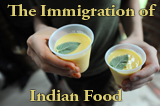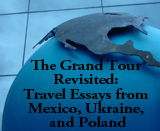Projects
Women and Migration: Gender Roles among Mexican Immigrants to the U.S. by Carlos Hernandez
The topic of migration has been part of the agenda of many nations. The movement of people, and the regulation of these flows, are what nations are concerned with and rightly so, since additional members to their society can have economic, political, and social impacts. Extensive research has been made on the topic of immigration from Mexico but only a very small part of that research has focused on women as a significant part ofthe equation. Kanaiaupuni in her article entitled, "Reframing the Migration Question: An Analysis of Men, Women, and Gender, "stated that the continuous flow of Mexican immigrants in the U.S. increasingly involves women (1314). The role of women and its impact on migration needs to be taken into consideration to further understand migration and its effects. It is important to understand how gender relations are affected by the act of immigrating to the U.S. Emilio Parrado and Chenoa Flippen in their publication entitled, "Migration and Gender among Mexican Women," sought to answer whether the "more liberal climate [in the U.S.] drives the evolution of gender structures" (24). In other words, what other factors need to be addressed in order to find out what causes change in gender relations? Differing views on the effect migration has on gender relations has been discussed by scholars and differing conclusions and results have been reached. The focus of this paper is to understand how these roles do change.
The Face of HIV: Women of Sub-Saharan Africa by Krystina Sandefur
When most of the population thinks of migration they think economic impacts, job placement, and freedom from oppression. However, there is a largely overlooked aspect of the movement of humans, and that is the diseases humans bring with them. According to Cummings, “more than 10 million children or adults in the United States suffer from some form of genetic disorder, and every childbearing couple stands an approximately 3 percent risk of having a child with some form of genetic anomaly” (Cummings 10). Thus genetic disease plays no small role in the daily life of Americans, or in any other country. [Continue...] [View accompanying website]
The Immigration of Indian Food by Emily Morgan, Anna Stukenberg, and Andrew Tolliver
For our GSTR 410 project, we chose to follow the immigration of Indian food from the Punjab region of India to other parts of the world. Through extensive research of books and online sources, we explored the migratory patterns of Punjabi food, focusing specifically on popular North Indian dishes such as Saag Paneer, Naan, Tandoori Chicken, Chana Masala, and Mango Lassi. We traced the travels of these dishes in an 8-10 page essay which explored their presence in countries such as Great Britain, America, Malaysia, and Singapore and the evolution of the recipes over time and through travel. We then recreated these five foods ourselves, following authentic recipes written by Indian cooks. To complement our research and to further authenticate our project, we also constructed a Tandoor (an Indian clay oven). Two of our dishes – Naan, and Tandoori Chicken – were cooked in the Tandoor, as is the traditional style, and a demonstration of this process was given as part of our class presentation. We then wrote a 4-5 page paper which briefly discussed the history of the Tandoor and its uses and provided details about our construction process.
The Grand Tour Revisited: Travel Essays from Mexico, Ukraine, and Poland by Mollie Harris
From pre-history to the advent of mass travel, we’ve been traipsing around the earth since time immemorial. We’re curious about what’s beyond our backyards, how other people live their lives, and how we’re different and the same compared to “everyone else.” Though we’ve always been on the move, what has changed is how we understand the act of travel in the wake of the latest great historical development, globalization. Globalization has accelerated the movement of peoples and ideas and provided new channels for communication, and when describing contemporary conflicts and problems, this all-encompassing term at least manages to make a guest appearance. That globalization has a permanent seat at the round-table discussion concerning issues of travel is not surprising, given that it is now possible through the internet to tour the Sistine Chapel online, speak digital-face to digital-face with someone halfway across the world, and watch a revolution unfold in real-time. Though we’re closer to the rest of the world than we ever have been, we’re still traveling more than ever before in history. This fact leads me to believe that travel is not one just one lens through which to understand our changing world, but perhaps it is the lens.
Choices: Walking More than a Mile in Another’s Shoes by Tyler Horn and Connie Podleski
Your name is Mauricio Villatoro and you are a nineteen year old boy living in Lourdes, El Salvador. Currently, you wish your stomach would just be quiet as you work; it has been bothering you all day. You only have a little bit of time left in your shift. Then you can go home. Hopefully your sister, Isabella, is able to come up with something for dinner. Money is tight but somehow she always manages to have a little bit of something ready once you get home. Your stomach grumbles at the thought. It is so hard to work on an empty stomach.



